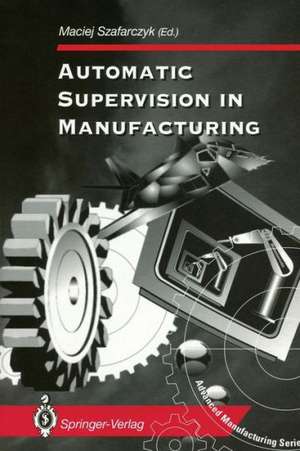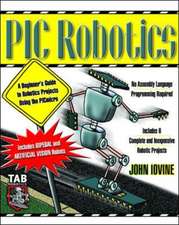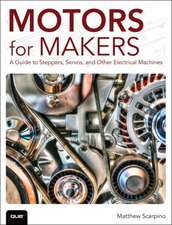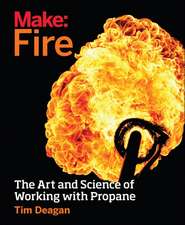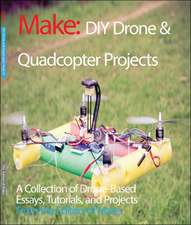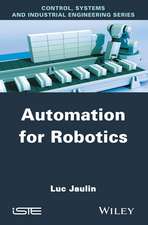Automatic Supervision in Manufacturing: Advanced Manufacturing
Editat de Maciej Szafarczyken Limba Engleză Paperback – 24 apr 2012
Din seria Advanced Manufacturing
- 15%
 Preț: 645.79 lei
Preț: 645.79 lei - 15%
 Preț: 649.06 lei
Preț: 649.06 lei - 15%
 Preț: 636.45 lei
Preț: 636.45 lei - 15%
 Preț: 650.69 lei
Preț: 650.69 lei - 15%
 Preț: 647.92 lei
Preț: 647.92 lei -
 Preț: 387.38 lei
Preț: 387.38 lei - 15%
 Preț: 635.65 lei
Preț: 635.65 lei -
 Preț: 390.84 lei
Preț: 390.84 lei -
 Preț: 384.86 lei
Preț: 384.86 lei -
 Preț: 388.13 lei
Preț: 388.13 lei - 15%
 Preț: 646.43 lei
Preț: 646.43 lei - 15%
 Preț: 693.06 lei
Preț: 693.06 lei -
 Preț: 385.08 lei
Preț: 385.08 lei - 18%
 Preț: 943.73 lei
Preț: 943.73 lei - 15%
 Preț: 586.85 lei
Preț: 586.85 lei - 15%
 Preț: 652.81 lei
Preț: 652.81 lei
Preț: 388.52 lei
Nou
Puncte Express: 583
Preț estimativ în valută:
74.35€ • 76.82$ • 61.85£
74.35€ • 76.82$ • 61.85£
Carte tipărită la comandă
Livrare economică 19 martie-02 aprilie
Preluare comenzi: 021 569.72.76
Specificații
ISBN-13: 9781447134602
ISBN-10: 1447134605
Pagini: 300
Ilustrații: XIV, 283 p.
Dimensiuni: 155 x 235 x 16 mm
Greutate: 0.43 kg
Ediția:Softcover reprint of the original 1st ed. 1994
Editura: SPRINGER LONDON
Colecția Springer
Seria Advanced Manufacturing
Locul publicării:London, United Kingdom
ISBN-10: 1447134605
Pagini: 300
Ilustrații: XIV, 283 p.
Dimensiuni: 155 x 235 x 16 mm
Greutate: 0.43 kg
Ediția:Softcover reprint of the original 1st ed. 1994
Editura: SPRINGER LONDON
Colecția Springer
Seria Advanced Manufacturing
Locul publicării:London, United Kingdom
Public țintă
ResearchCuprins
1. Principles of Automatic Supervision in Manufacturing and Classification of Supervisory Systems.- 1.1 Introduction.- 1.2 Quality of Products and Quality of Production.- 1.3 Disturbances, Adaptation and Supervision.- 1.4 Classification of Disturbances and Supervisory Functions.- 1.5 Monitoring, Diagnosing, Supervising.- 1.6 Automatic Supervisory Systems.- 1.7 Monitoring and Measurements.- 1.8 Supervisory Actions and Control Strategy.- References.- 2. Automatic Supervision in Turning and Boring.- 2.1 Introduction.- 2.2 Control of the Machining Process.- 2.3 Future Needs and Developments.- Further Reading.- 3. Automatic Supervision in Milling.- 3.1 Introduction: Basic Formulations.- 3.2 General Discussion.- 3.3 Description of Individual Systems.- References.- 4. Automatic Supervision of Surface Grinding.- 4.1 Introduction.- 4.2 Quality Parameters and Closed-loop Quality Control of Precision Machining.- 4.3 High-accuracy Closed-loop Position Control for the Feed Axis of a CNC Surface-grinding Machine.- 4.4 In-process Testing of Workpiece Geometry.- 4.5 In-process Eddy Current Crack Testing.- 4.6 Diagnosis of Working Ability.- 4.7 Outlook: Manufacturing with Closed-loop Quality Control.- 4.8 Summary.- Further Reading.- 5. Automatic Supervision in Physical and Chemical Machining.- 5.1 Physical and Chemical Machining Processes.- 5.2 Needs for Automatic Control in P&C Machining.- 5.3 Control Loops in P&C Machining.- 5.4 Adaptive Control in P&C Machining.- 5.5 Conclusion.- References.- 6. Automatic Supervision in Metal-forming.- 6.1 Introduction.- 6.2 Influence of Press Type on Supervisory Action.- 6.3 Working Cycle Supervision.- 6.4 Case Study: Backward Extrusion.- References.- 7. Assembly Process Supervision within Flexible Automatic Assembly Systems.- 7.1 Introduction.- 7.2Background Work.- 7.3 General Description of the Error Types.- 7.4 The Process.- 7.5 Error Detection and Analysis.- 7.6 Error Recovery.- References.- Further Reading.- 8. Automatic Supervision of Machine Tools.- 8.1 Introduction.- 8.2 Generic Structure of ASMT.- 8.3 Generation of Prognostic Parameters.- 8.4 System and Signal Analysis.- 8.5 Example ASMT Systems.- 8.6 Examples of Signal and System Analysis.- 8.7 Conclusions.- Acknowledgments.- References.- 9. Automatic Supervision of Control Systems.- 9.1 Diagnosis.- 9.2 Diagnosis Processes.- 9.3 Teleservice System for Machine Tools with ISDN.- 9.4 Use of Expert Systems.- References.- 10. Signal Processing for Automatic Supervision.- 10.1 Background on the Developing Needs of Sensors and Signal Processing in Manufacturing Automation.- 10.2 Signal Processing, Feature Extraction and Sensor Fusion.- 10.3 Applications of Signal Processing and Sensor Fusion.- 10.4 New Signal Processing Techniques for Automatic Supervision.- 10.5 Conclusion.- Acknowledgements.- References.- 11. Geometrical Adaptive Control of Manufacturing Systems.- 11.1 Introduction.- 11.2 Quality of Machined Parts.- 11.3 Transformation of the Parameters of Geometric Quality during Machining.- 11.4 Quantitative Description of the Geometrical Quality of a Part.- 11.8 Conclusions.- References.- Glossary: Terms, Abbreviations and Definitions.- M. Szafarczyk.
